Flowers are a constant source of joy: botanists, gardeners, poets, and everyone who takes a walk in the springtime knows the pleasure of seeing a flower opening up, often bringing with it a delicious scent. The common flowers – daisies, roses, geraniums, and even dandelions – are no less wonderful for being common, but rare flowers have a particular fascination.
This article will explore some of the lesser-found flowers – the elusive beauties that get a botanist’s heart racing. These flowers may even inspire you to cultivate these rare blooms in your own garden – if you can get your hand on one, that is!
Overview of Rare Flowers
Flowers, the reproductive structure of certain kinds of plants, come in a wide variety of colors and sizes. Because they are trying to attract pollinators like bees and butterflies, they are often bright and vivid, which is one of the reasons that people put such high value on them. Rare flowers often have unusual characteristics resulting from adaptations to specific environments, which makes them exotic and exciting to both scientists and amateurs. Some rare flowers have a particular allure about them. For example, cayman sage, or Salvia caymanensis, is a rare plant that was thought to be extinct for many years until its rediscovery.
A historical example of a rare flower is the Semper Augustus tulip, known for being the most expensive bulb sold during the Dutch tulip mania in the 17th century when tulips became a prized commodity. Supposedly, someone sold the Semper Augustus bulb for 12 acres of land.
The value of flowers can go far beyond the aesthetic appreciation of a flower into real speculative value. Money and beauty aren’t the only uses for these flowers. Some rare flowers have been used in traditional medicine for centuries, their scarcity adding to their perceived potency. Others hold spiritual or symbolic significance in various cultures, sometimes featuring in rituals or folklore.
Another use for rare flowers is in floral arrangements and garden designs. When you want to go all out or add the perfect touch, a rare flower might be the way to go. Learning about and experiencing these rare flowers can be fascinating. It enhances our appreciation of the diversity of nature and reminds us of the importance of conservation efforts to preserve these stunning yet vulnerable species for future generations.
List of the 15 Rarest Flowers
Chocolate Cosmos (Cosmos atrosanguineus)
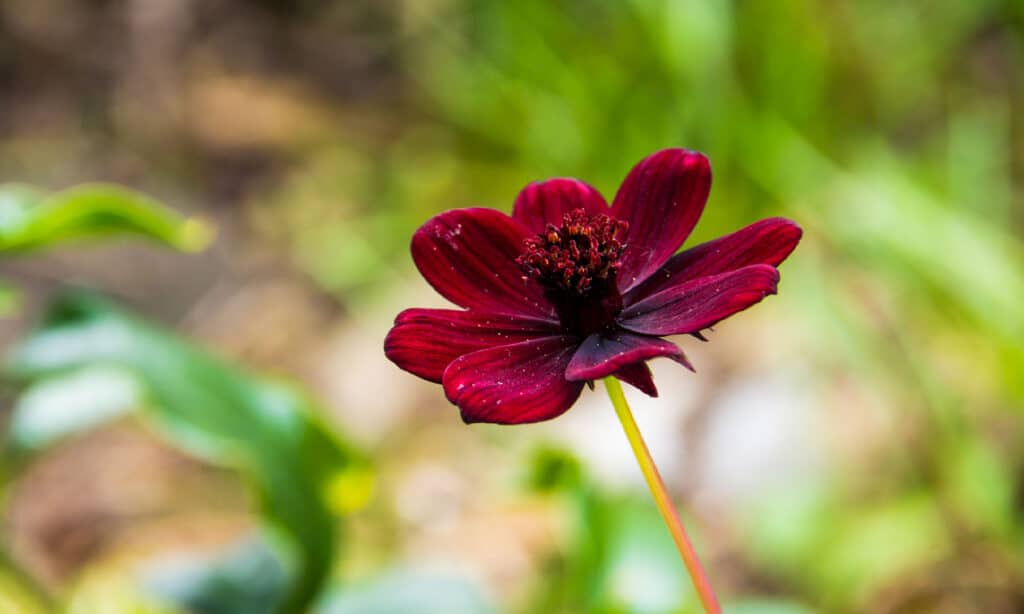
Native to Mexico, the chocolate cosmos has a chocolate scent.
©iStock.com/kinpouge05
Chocolate cosmos is a perennial plant native to Mexico. It gets its name from the rich, dark-burgundy, almost chocolate-colored flowers that release a delightful chocolate-vanilla scent. The smell and unique color make this flower a gardener’s favorite.
Cayman Sage (Salvia caymanensis)

Considered extinct until 2007, the Cayman sage is still an endangered plant.
Cayman sage is a critically endangered perennial native to Grand Cayman. Interestingly, this plant was considered extinct for four decades until its rediscovery in 2007. The Cayman sage boasting pale blue blooms with unique large lips and white interior markings. And since it’s rediscovery, about 300 plants have been found, solidifying its status as a cherished member of the sage family.
Sweet Juliet Rose (Rosa ‘Ausleap’)
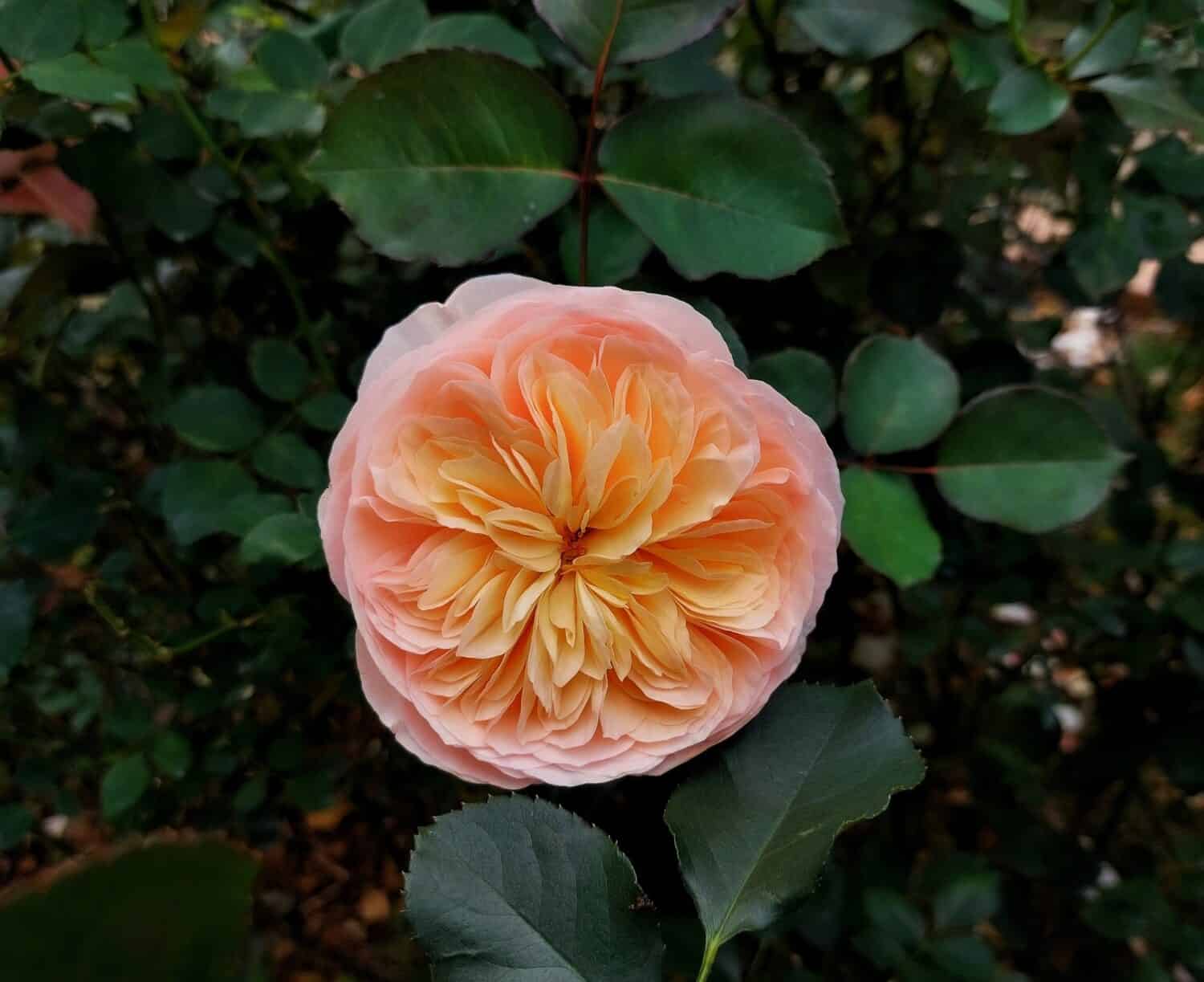
The Sweet Juliet rose sold for $5 million.
©LIN MEI CHEN/Shutterstock.com
Known as one of the most expensive flowers in the world, the Sweet Juliet rose has an intricate pattern of peach-colored petals. This was a creation by the English botanist David Austin. It quickly gained fame for its beauty and the mystique of its creation. Apparently, it took 15 years and quite a lot of money to create. It initially sold for an incredible five million dollars!
Corpse Flower (Amorphophallus titanum)

You don’t want a titan arum in your backyard.
©iStock.com/passion4nature
The corpse flower, also known as titan arum, is an extraordinary plant native to the rainforests of Sumatra, Indonesia. It has one of the largest inflorescences in the world (a cluster of flowers growing on a single branch) and for its pungent odor of rotting flesh, which attracts insect pollinators. Many botanical gardens cultivate this plant, where its unpredictable blossoming season attracts significant interest.
Middlemist’s Red (Middlemist camellia)
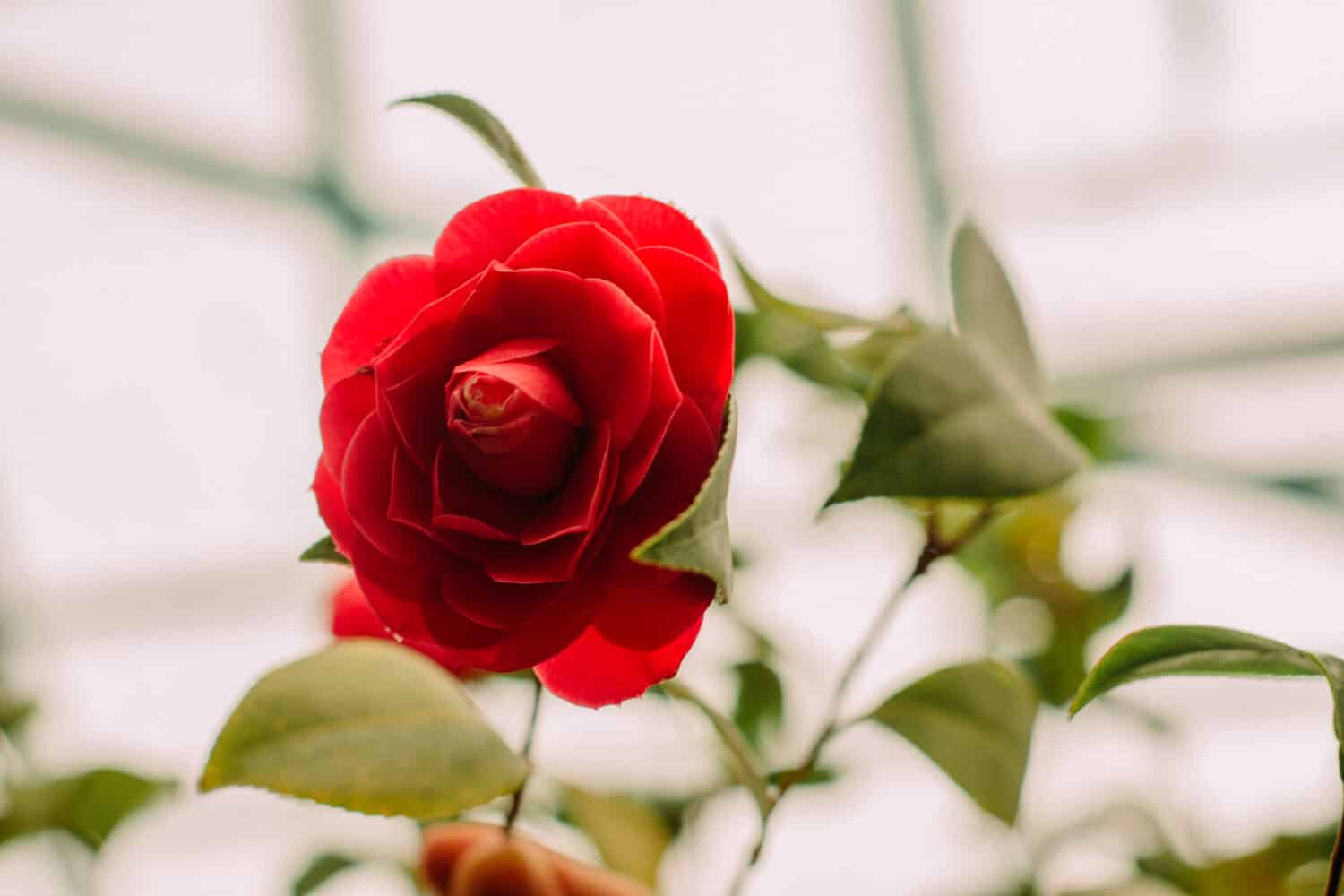
This camellia only exists in London and New Zealand.
©Eugenia Pankiv/Shutterstock.com
Middlemist’s red, a flower native to China, was imported to the UK in 1804. Today, it is one of the rarest flowers in the world, as it only exists in two locations: a garden in New Zealand and another in London. Its beautiful red blossoms are a treasure of these gardens.
Rothschild’s Slipper Orchid (Paphiopedilum rothschildianum)
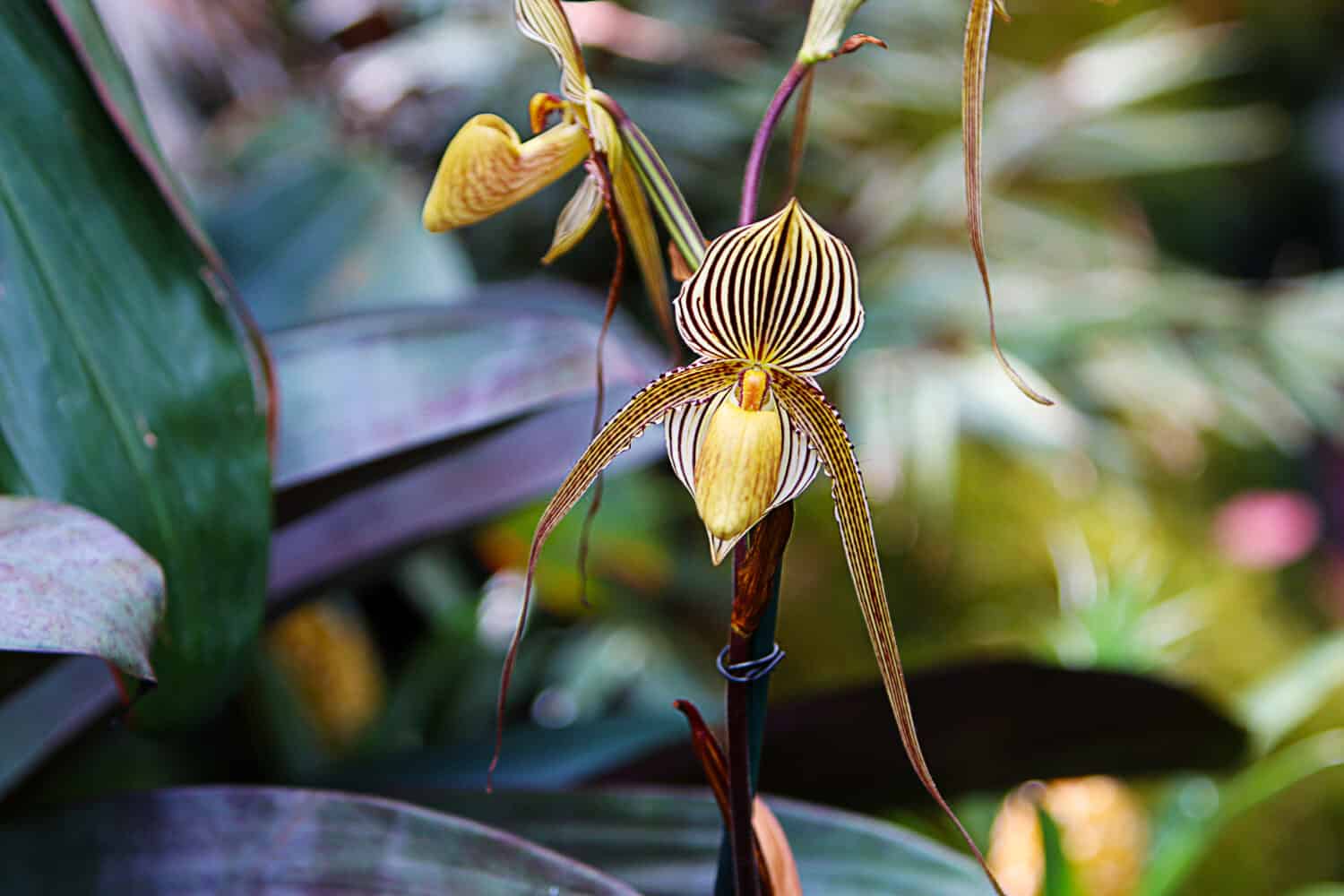
This orchid is in a national park in Borneo.
©yakonstant/Shutterstock.com
Rothschild’s slipper orchid can be found only in the Kinabalu National Park in Borneo. The flower has beautiful striped petals. To some people, its flowers resemble the shape of a tropical bird.
Parrot’s Beak (Lotus berthelotii)
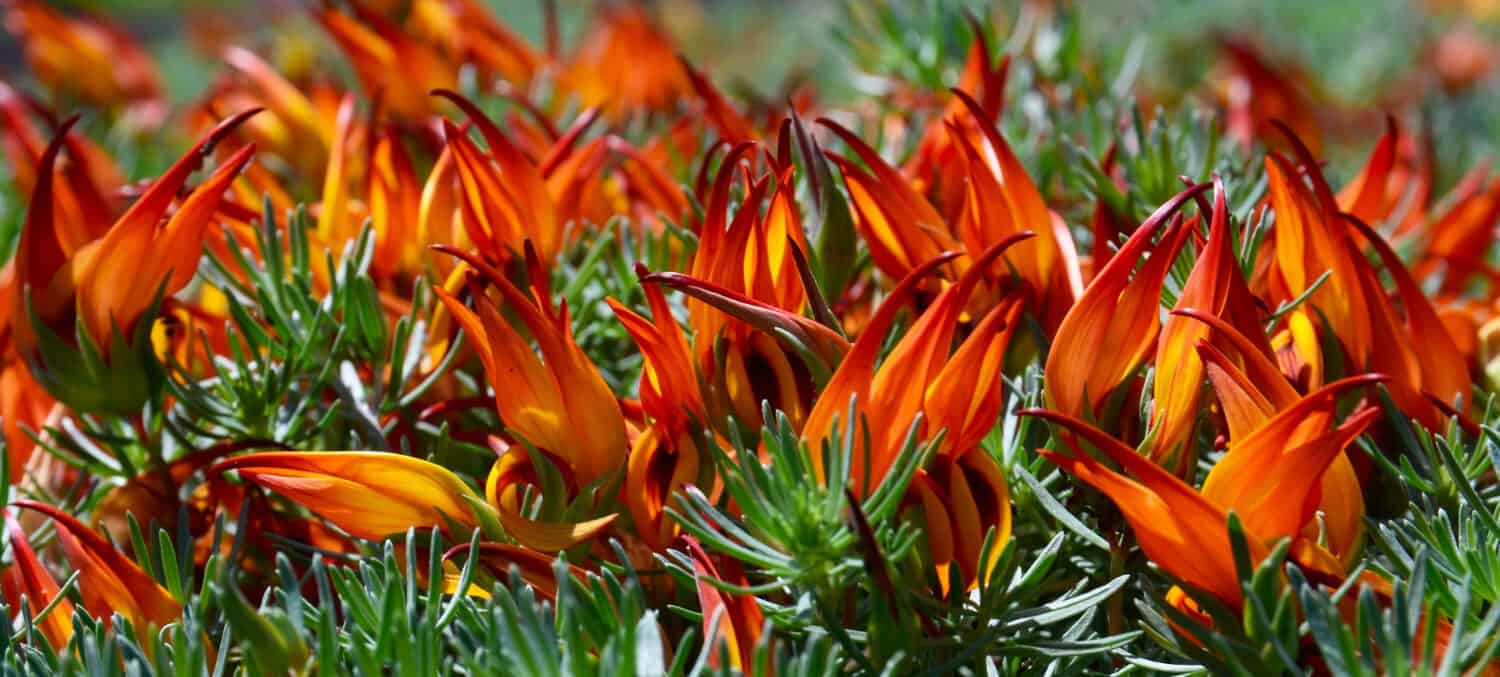
The parrot’s beak looks like its namesake.
©svf74/Shutterstock.com
Another flower that resembles a bird is the parrot’s beak, a trailing plant originally from the Canary Islands. Its vibrant red-orange flowers resemble a parrot’s beak, hence its name. As it is extinct or nearly extinct in the wild, it must be cultivated carefully in private collections and botanical gardens.
Black Bat Flower (Tacca chantrieri)

The “whiskers” of the black bat flower are super long!
©joloei/Shutterstock.com
The black bat flower is an unusual black-colored flower native to Southeast Asia with bat-shaped flowers and long “whiskers” that can grow up to 28 inches. In some of its native lands, it is believed to ward off evil spirits, and the roots are also used for medicinal purposes. However, the flowers are toxic if consumed.
Kadupul Flower (Epiphyllum oxypetalum)

The Queen of the Night is a cactus flower that blooms at night.
©K.K.T Madhusanka/Shutterstock.com
The Kadupul flower, also known as the Queen of the Night, is a cactus flower native to Central America. Its large, fragrant, white blooms famously only open at night and wilt before dawn. Often considered the most beautiful flower in the world due to its fleeting color and enchanting fragrance, it may have become naturalized in China and other tropical locations. However, it is still rare in North America and Europe.
Ghost Orchid (Dendrophylax lindenii)
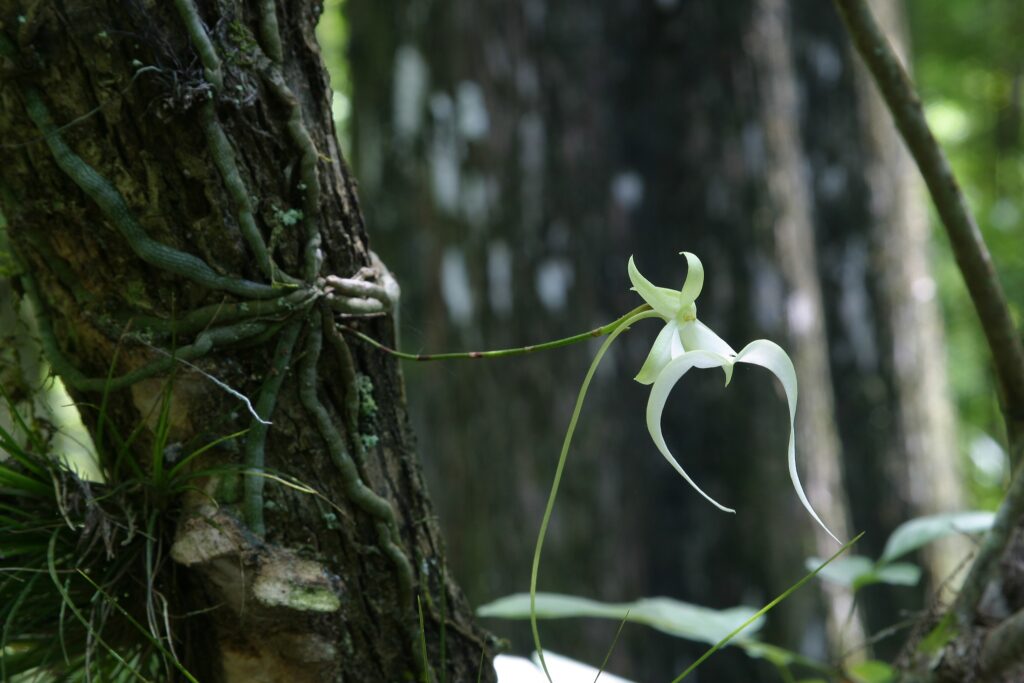
These orchids are one of the rarest flowers in the world.
©Francisco Blanco/Shutterstock.com
Ghost orchids are rare and leafless flowers often grown in Florida, Cuba, and the Bahamas. Its white flowers seem to almost float in the air, giving it its ghostly name. Its growth habits and rarity have fascinated orchid enthusiasts for decades and made it the subject of both legal and illegal orchid trade.
Angel’s Trumpet (Brugmansia Vulcanicola)

A toxic plant, the angel’s trumpet is extinct in the wild.
©Nowaczyk/Shutterstock.com
The angel’s trumpet is a rare and toxic plant, now considered extinct in the wild. This plant is thought only to be remaining in gardens or botanical gardens. The blooms of the angel’s trumpet can vary in color from yellow to pink and red.
Cooke’s Kokio (Kokia Cookei)
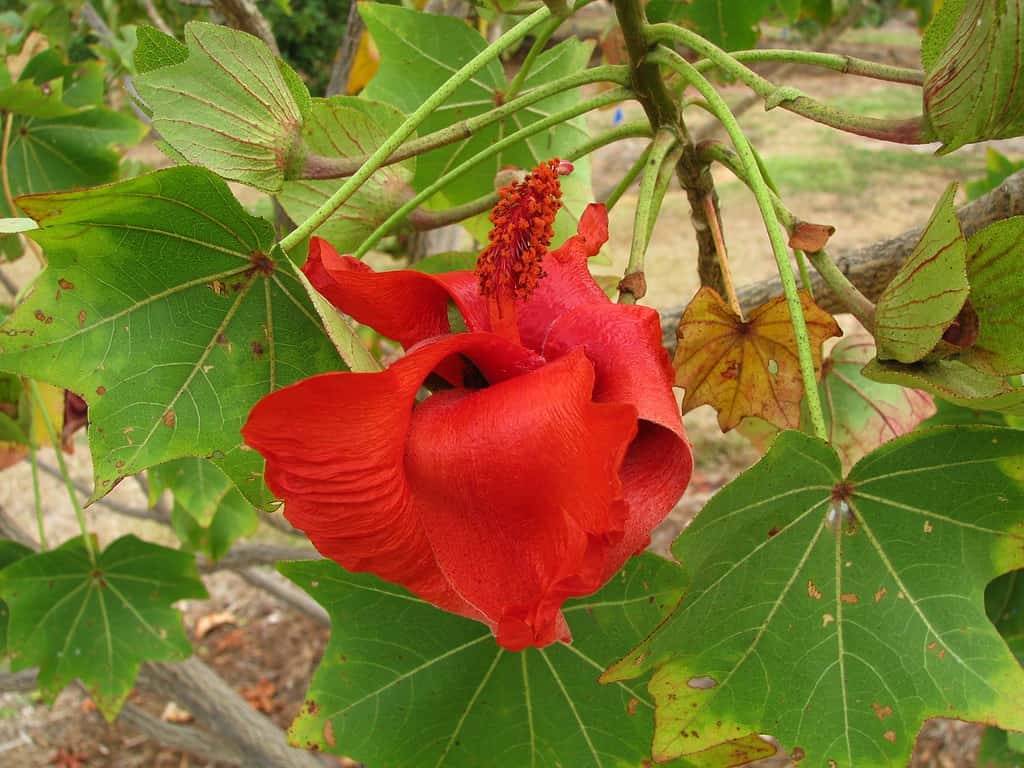
Cooke’s kokia is native to Hawaii.
©David Eickhoff from Pearl City, Hawaii, USA / CC BY 2.0 – Original / License
Another rare plant thought to be extinct in the wild, Cooke’s kokio is native to the islands of Hawaii. Blooming in vibrant red and orange, this rare plant can grow to impressive heights of up to approximately 10 feet.
Franklin Tree (Franklinia alatamaha)
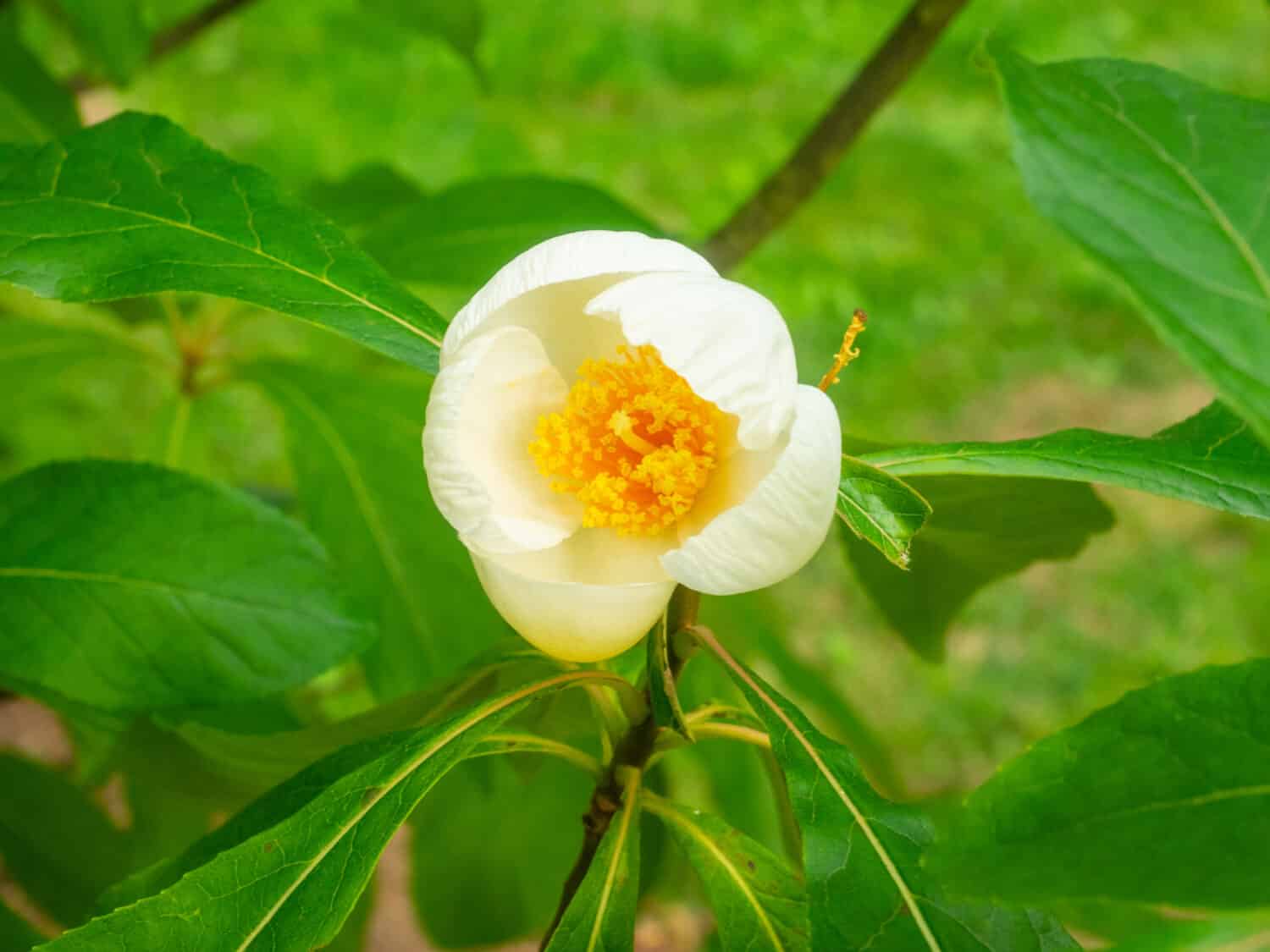
This rare tree has white flowers.
©Mariusz S. Jurgielewicz/Shutterstock.com
The Franklin tree, extinct in the wild, is native to the U.S. Southeast. It has dark leaves and white flowers with yellow stamens and is now cultivated as an ornamental plant.
Gibraltar Campion (Silene tomentosa)

The Gibraltar campion (Silene tomentosa) is native to Gibraltar.
Native to Gibraltar, this low-growing herb has hairy leaves and pink to pale violet (almost white-ish) flowers. Thought to be extinct in the 1990s, a single specimen was found. Conservation efforts have since increased its numbers, though it still remains rare.
Girlfriend Kiss (Palicourea elata)
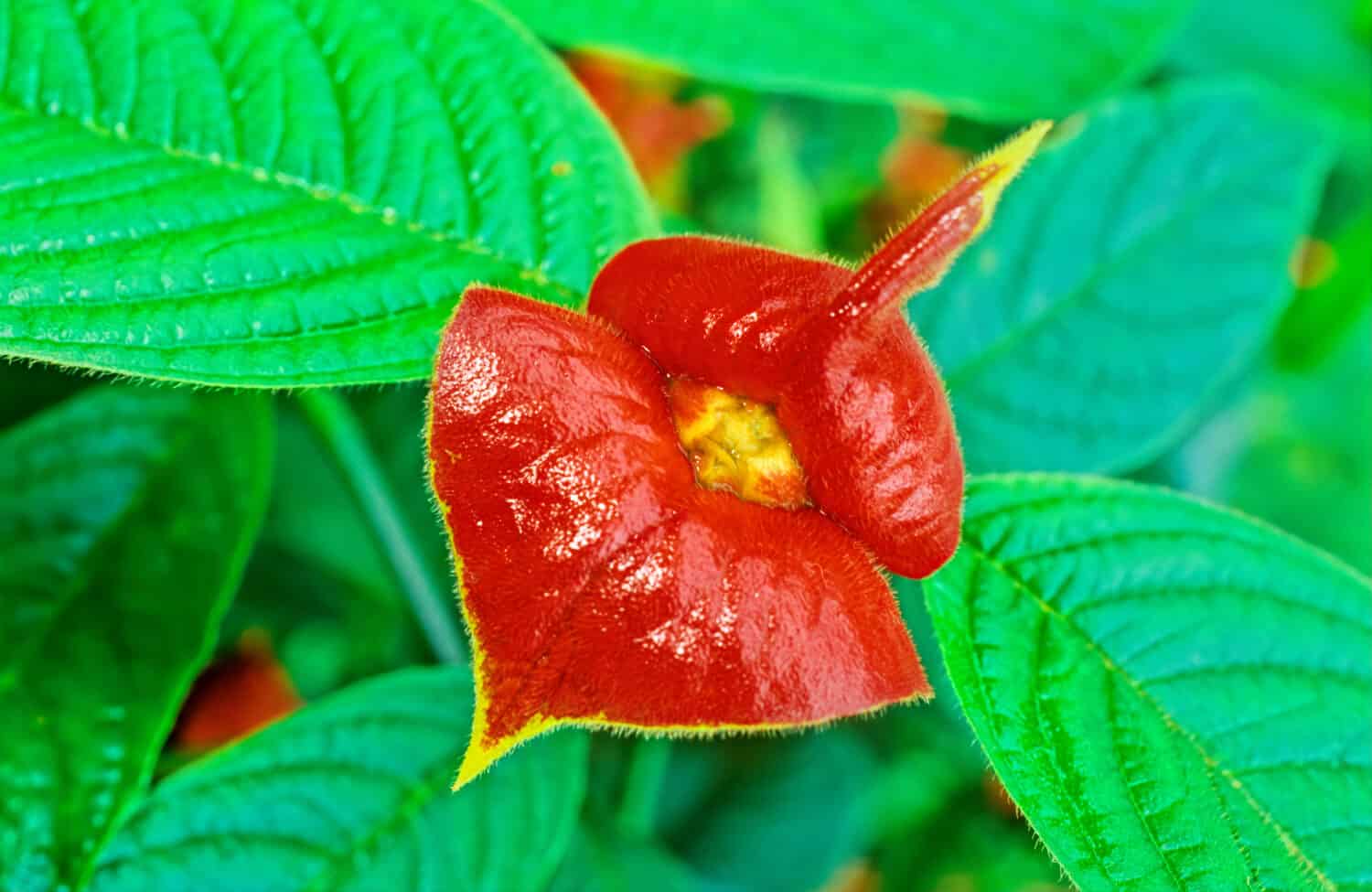
It’s easy to see why this plant is called girlfriend kiss!
©Roberto Dani/Shutterstock.com
Also known as “hot lips”, this Central and South American plant has red bracts resembling lips and yellow flowers. Despite habitat loss, it still exists in the wild in protected areas but is considered vulnerable.
Conservation Efforts
The conservation of rare flowers, including those listed above, involves numerous institutions and organizations worldwide. The fragile status of these flowers underscores the importance of ensuring their survival and preservation for future generations.
Botanic gardens play a crucial role in conserving rare and endangered plants. They not only serve as living museums of plant biodiversity but also act as research and education centers. For instance, botanic gardens worldwide participate in conservation, maintaining collections of rare flowers, preserving their seeds in seed banks, and researching their propagation and cultivation methods. Government agencies, too, have an integral role in conservation efforts. Many national and regional governments enforce regulations to protect endangered species and their habitats. They may also oversee and fund recovery programs. For example, the Rothschild’s slipper orchid is legally protected in its native Borneo, with collection and trade strictly regulated.
Non-profit organizations often collaborate with botanic gardens and government agencies and contribute significantly to conservation initiatives. These organizations raise awareness, fund research, and lead projects to restore habitats and reintroduce endangered plants into the wild. Global partnerships, like the Global Strategy for Plant Conservation, unite many of these entities in a coordinated, international effort to halt the loss of plant species worldwide.
However, challenges persist, and the need for continued conservation efforts remains critical. Climate change, habitat loss, and the illicit trade of rare plants are ongoing threats. Public support and increased awareness of these rare flowers’ unique beauty and cultural significance can significantly contribute to these essential conservation efforts.
How to Grow and Care for Rare Flowers
Growing rare flowers can be a rewarding experience. However, it often requires a certain level of gardening know-how, patience, and sometimes special equipment like greenhouses and other refined tools. Each flower has unique requirements, of course. And furthermore, keep in mind that many of these flowers are incredibly difficult or nearly impossible to obtain.
When seeking to acquire these flowers, find reputable sources that can also provide guidance on their care and propagation. Remember that international laws and conventions protect many of rare plants. This means their trade is carefully regulated to prevent exploitation and endangerment. Therefore, places to consider sourcing from include local botanic gardens, reputable online nurseries, or trusted local suppliers. Before purchase, ensure the plants were cultivated sustainably and legally. Check for certifications or ask about the plant’s origins.
Furthermore, always remember, as gardeners and flower enthusiasts, we are responsible for respecting nature’s rarity and not contributing to the depletion of natural populations. By supporting sustainable practices, we also contribute to preserving these stunning species for future generations to admire.
Chocolate Cosmos (Cosmos atrosanguineus)
These flowers prefer full sun and well-drained soil. Water regularly, but avoid waterlogging. Unlike other cosmos flowers, chocolate cosmos are actually propagated by their tuberous roots. Make sure to bring them indoors during winter in colder climates.
Cayman Sage (Salvia caymanensis)
To cultivate Cayman sage, a perennial herb and shrub, position it in a spot with full sun to partial shade, ideal for its growth. Ensure the environment has a minimum cold hardiness of Zone 9a (20 to 25 degrees Fahrenheit), with the plant’s height and spread expected to reach about 18 inches.
Sweet Juliet Rose (Rosa ‘Ausleap’)
This rose requires full sun and well-drained soil. Additionally, regular watering and pruning will keep the plant healthy.
Corpse Flower (Amorphophallus titanum)
While it is unlikely that you will want to (or be able to) plant a corpse flower in your own garden, you can visit a botanical garden where one of these flowers is growing and learn information about its cultivation.
Middlemist’s Red (Middlemist camellia)
There are only two Middlemist’s camellias in the world. So if you manage to grow it in your own garden, you’ll probably manage to attract a few visitors! As with other camellias, propagate this flower by taking a cutting and putting it in water. Rooting will occur within a couple of months, after which you can plant it.
Rothschild’s Slipper Orchid (Paphiopedilum rothschildianum)
This orchid requires careful cultivation in soil optimally balanced for this plant. This is a slow-growing, fragile plant that requires thorough care and expertise. It’s also important to ensure optimal watering, light levels, and humidity for their growth.
Parrot’s Beak (Lotus berthelotii)
This flower looks for full sunlight or partial shade, well-drained soil, and regular watering. However, make sure not to overwater or underwater it, as it may cause the foliage to drop.
Black Bat Flower (Tacca chantrieri)
These plants thrive in warm, humid conditions, prefer shade, and need rich, well-drained soil. Furthermore, regular watering is essential.
Kadupul Flower (Epiphyllum oxypetalum)
This cactus likes indirect light, high humidity, and well-draining soil. Water this plant thoroughly and make sure it is dried out before watering again.
Ghost Orchid (Dendrophylax lindenii)
This orchid may be challenging to grow and requires a humid environment, specific temperature ranges, and a host tree for its roots. The ghost orchid is not recommended for casual gardeners.
Angel’s Trumpet (Brugmansia Vulcanicola)
This plant can withstand some shade but prefers gentle morning sun. When hot weather is on the way, place the angel’s trumpet inside or in a protected area.
Cooke’s Kokio (Kokia Cookei)
This plant may be hard for the amateur gardener to grow due to the rarity of this plant. It’s best to visit this plant in places where it may be protected.
Franklin Tree (Franklinia alatamaha)
The franklin tree prefers to be planted shallow and in nutrient-rich or fertilized soil. Make sure to water this plant regularly.
Gibraltar Campion (Silene tomentosa)
The Gibraltar champion can only be found at the Gibraltar Botanic Gardens. To learn about how the Gibraltar campion thrives and grows, it’s best to visit the botanic gardens.
Girlfriend Kiss (Palicourea elata)
For girlfriend kiss to thrive, the plant grows best in warm weather, high humidity, protected from the sun, or within a greenhouse.
Summary of the Rarest Flowers in the World
| Flower | Botanical Name |
|---|---|
| Chocolate Cosmos | Cosmos atrosanguineus |
| Cayman Sage | Salvia caymanensis |
| Sweet Juliet Rose | Rosa ‘Ausleap’ |
| Corpse Flower | Amorphophallus titanum |
| Middlemist’s Red | Middlemist camellia |
| Rothschild’s Slipper Orchid | Paphiopedilum rothschildianum |
| Parrot’s Beak | Lotus berthelotii |
| Black Bat Flower | Tacca chantrieri |
| Kadupul Flower | Epiphyllum oxypetalum |
| Ghost Orchid | Dendrophylax lindenii |
| Angel’s Trumpet | Brugmansia Vulcanicola |
| Cooke’s Kokio | Kokia Cookei |
| Franklin Tree | Franklinia alatamaha |
| Gibraltar Campion | Silene tomentosa |
| Girlfriend Kiss | Palicourea elata |
Thank you for reading! Have some feedback for us? Contact the AZ Animals editorial team.







